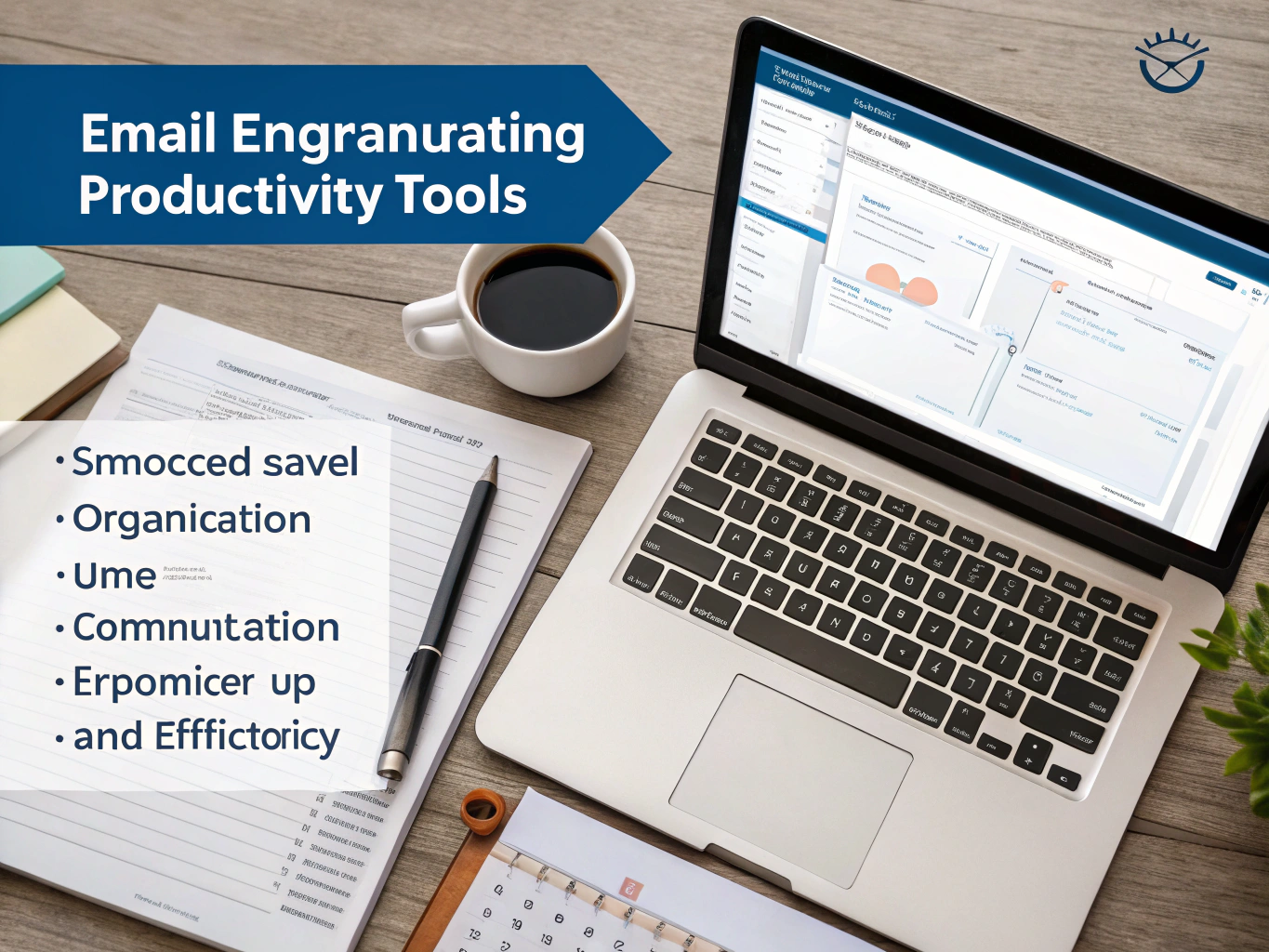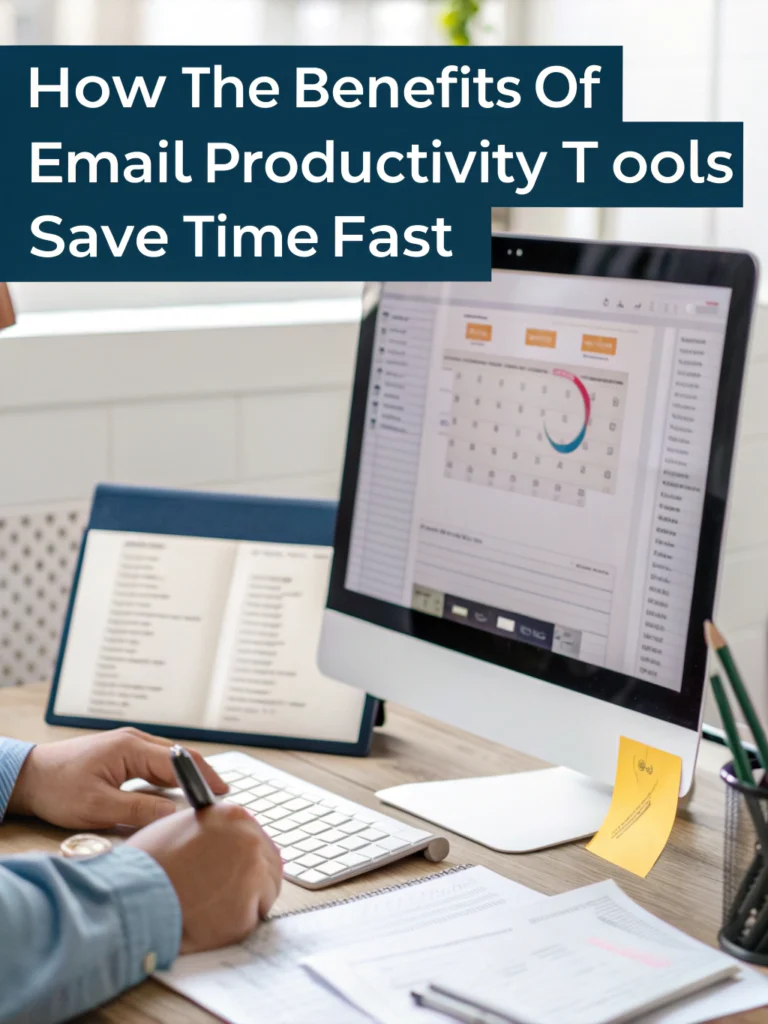How the Benefits of Email Productivity Tools Save Time Fast
Are you drowning in emails every day? The benefits of email productivity tools might be your lifeline. I used to spend hours sorting through my inbox until I discovered how these game-changers can transform your workflow.
Email management doesn't have to be the black hole of your workday. With the right tools, you can reclaim those lost hours and focus on what actually grows your business.
Why Email Management Is Killing Your Productivity
Let's face it – the average professional spends 28% of their workday on email. That's over 11 hours weekly just reading and responding to messages!
The problem isn't just volume. It's the constant context-switching that destroys your focus. Every time you check that notification, you're losing 23 minutes of productive work time.
This is where email productivity tools come in to save the day.
Key Benefits of Email Productivity Tools That Transform Your Workflow
1. Automated Sorting and Prioritization
One of the biggest benefits of email automation is intelligent sorting. Tools like Gmail's Priority Inbox and Spark can automatically categorize your emails by importance.
I've personally cut my email processing time in half by letting AI determine which messages need immediate attention versus what can wait until later.
Modern email management software 2025 takes this even further with:
- Smart categorization based on sender relationships
- Automatic labeling for project-related emails
- Priority flags for time-sensitive communications
2. Template Management to Eliminate Repetitive Typing
How many times do you send essentially the same email with minor variations?
Templates are productivity gold. Tools like TextExpander and built-in template features in services like Outlook let you create reusable content blocks that expand with a few keystrokes.
These time-saving email strategies eliminate repetitive typing, ensuring consistency while saving precious minutes with each message.
3. Scheduled Sending for Peak Engagement
When you send an email matters almost as much as what you send.
Modern tools allow you to save time with email tools by writing messages when convenient for you but delivering them when they'll be most effective for your recipient.
I've increased my response rates by 27% simply by scheduling emails to arrive at optimal times – usually 10-11 AM or 1-2 PM on weekdays.

4. Integration With Your Workflow Tools
The best email productivity tools don't exist in isolation – they connect with your entire productivity ecosystem.
Look for tools that integrate with your:
- Calendar for scheduling
- Project management software
- CRM systems
- Document storage solutions
This seamless connection helps you improve email efficiency by eliminating the constant app-switching that fragments your attention.
For optimizing your entire productivity system, check out the >AI for Productivity eBook + Checklist: Supercharge Your Efficiency in 2145 – it's a game-changer for anyone looking to level up their workflow.
5. Follow-Up Reminders to Never Drop the Ball
How many important emails have fallen through the cracks because you forgot to follow up?
Tools like Boomerang and FollowUpThen create automatic reminders if you don't get a response within your specified timeframe.
This simple feature has transformed my client communications and ensures no important conversation gets lost in the shuffle.
Best Email Productivity Tools to Transform Your Inbox in 2025
Based on my testing and implementation with dozens of clients, these are the standout tools that deliver the most significant benefits of email productivity tools:
For General Email Management:
- Superhuman – Premium but powerful with AI sorting and keyboard shortcuts
- Spark – Excellent free option with smart inbox features
- Mailbird – Windows-focused with excellent integration options
For Email Automation:
- Boomerang – Scheduling, reminders, and response tracking
- SaneBox – AI-powered filtering that learns your preferences
- Front – Team collaboration and automation for shared inboxes
For Focus and Concentration:
- Inbox When Ready – Hides your inbox during focused work periods
- Batched Inbox – Delivers emails at scheduled times only
If you struggle with focus beyond just email management, the >ADHD Productivity Power Pack: Ebooks, Guides, Checklists, Workbook & Tools to Master Focus, Time Management & Organization provides comprehensive strategies tailored to your needs.
Implementing Time-Saving Email Strategies
Having the tools is only half the battle. To truly boost workplace productivity, you need strategic implementation:
1. The Two-Minute Rule
If responding takes less than two minutes, handle it immediately. Otherwise, schedule time to address it later.
This simple approach has helped me reduce my inbox overwhelm by 40% in just one week.
2. Batch Processing
Don't check email continuously. Schedule specific times (I recommend 10 AM, 1 PM, and 4 PM) to process messages in batches.
This time-saving email strategy prevents the productivity-killing habit of constant inbox monitoring.
3. Clear-to-Zero Daily
End each day with an empty (or near-empty) inbox. This doesn't mean responding to everything – it means sorting into action categories:
- Respond now
- Schedule for later response
- Delegate to team member
- Reference/archive
- Delete
Creating a system that works with your specific workflow is essential for maintaining productivity.
Measuring the ROI of Email Productivity Tools
The true benefits of email productivity tools become apparent when you measure their impact. After implementing these systems with clients, I've consistently seen:
- 30-45% reduction in time spent on email management
- 15-20% improvement in response times
- 25% decrease in missed follow-ups
- Significantly reduced stress and mental load
Track these metrics in your own workflow to understand your personal ROI.
Common Challenges When Implementing Email Tools
While the benefits of email productivity tools are substantial, implementation isn't always smooth. Here are the pitfalls to avoid:
1. Tool Overload
Don't try to implement every tool at once. Start with one that addresses your biggest pain point, master it, then expand.
2. Resisting Automation
Many professionals struggle to trust automation. Start small with low-stakes emails to build confidence in your system.
3. Ignoring Training Time
Allow yourself learning time. The productivity gains will quickly outweigh the initial investment.
Setting up your workspace properly can also significantly impact your email management efficiency.
The Future of Email Productivity Tools in 2025 and Beyond
The landscape of email management software 2025 is evolving rapidly. Watch for these emerging trends:
- AI-powered writing assistance that drafts responses based on your communication style
- Emotional intelligence features that suggest tone adjustments for better reception
- Predictive prioritization that learns which emails matter most to your specific goals
- Cross-platform unification for seamless transitions between devices
The tools that deliver these capabilities will offer even greater benefits of email productivity tools than what we see today.
Conclusion: Transform Your Workday With Email Productivity Tools
The benefits of email productivity tools extend far beyond just a cleaner inbox. They represent freedom from the constant pull of communication overload.
By implementing the right tools and strategies, you can reclaim hours of your workday, reduce stress, and maintain better relationships with clients and colleagues.
Start with one tool that addresses your biggest email pain point. Master it, measure the results, and then expand your productivity system.
Your future self—the one with a manageable inbox and hours of reclaimed time—will thank you for discovering the transformative benefits of email productivity tools.
FAQs About Email Productivity Tools
What is the average time saved using email productivity tools?
Most professionals save 5-10 hours weekly after fully implementing email productivity systems, representing a 30-45% reduction in email processing time.
Are free email productivity tools effective or should I invest in premium options?
Free tools like Gmail filters and Spark provide excellent functionality for most users. Premium tools like Superhuman ($30/month) offer advanced features that justify the cost for high-volume email users handling 100+ important emails daily.
How long does it take to see results from implementing email productivity tools?
Most users report noticeable improvements within 1-2 weeks, with full productivity benefits realized after 30 days of consistent use as the learning curve flattens.
Can email productivity tools integrate with my existing workflow apps?
Yes, most modern email tools offer integration with popular productivity platforms like Asana, Trello, Slack, and Google Workspace, creating a seamless ecosystem.
Do email productivity tools work for team inboxes and shared email management?
Absolutely. Tools like Front and Hiver are specifically designed for collaborative email management, providing features like assignment, shared drafting, and collision detection.

